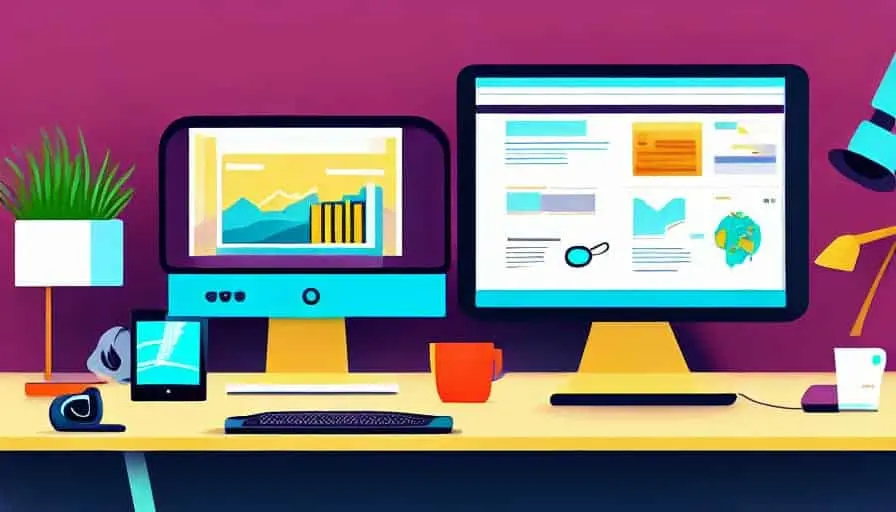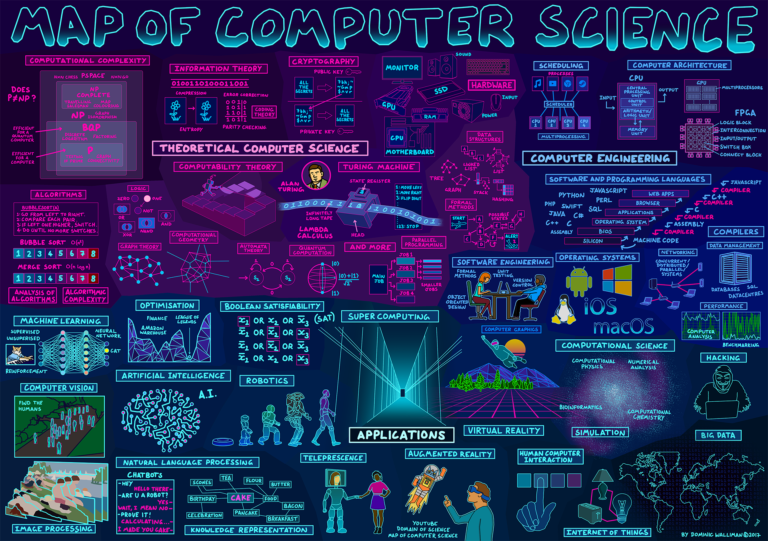Web Development 101: The Basics You Need to Know
Introduction
Web development has become one of the most important skills of the digital age. The internet is now the primary source of information, communication, and commerce. In this beginner’s guide, we will introduce you to the basics of web development, from programming languages to web hosting.
What is web development?
Web development is the process of creating websites and applications for the Internet. It involves coding, designing, and publishing web content. Web developers use programming languages such as HTML, CSS, and JavaScript to build web pages and web applications.
Why is web development important?
Web development is essential in today’s digital age. Websites and web applications are now the primary way people interact with businesses, learn new things, and consume content. Without web development, the internet would not exist in the way we know it today.
Who can benefit from learning web development?
Anyone can benefit from learning web development. Whether you’re looking to start a new career, improve your skills, or pursue a passion, web development is a valuable skill to have. It’s especially useful for entrepreneurs, designers, marketers, and anyone interested in creating websites or web applications.
Programming Languages
HTML
What is HTML?
HTML stands for “Hypertext Markup Language” and is the foundation of web development. It’s used to create the structure and content of web pages.
Basic HTML structure
HTML consists of tags, which are used to define different parts of a web page. These tags are enclosed in angle brackets and have opening and closing tags. For example, the <html> tag defines the beginning of an HTML document, while the </html> tag defines the end.
Understanding HTML tags
HTML tags are used to define headings, paragraphs, images, links, and more. Each tag has a specific purpose and must be used correctly to ensure the proper structure and functionality of the web page.
CSS
What is CSS?
CSS stands for “Cascading Style Sheets” and is used to style web pages. It’s used in conjunction with HTML to create visually appealing websites.
How to style your webpage using CSS
CSS is used to define the look and feel of a web page. It can be used to change the colors, fonts, spacing, and layout of a web page. CSS can be included in the HTML document or in a separate file.
Common CSS properties
CSS has many properties that can be used to style web pages. Some common properties include color, font size, margin, padding, and display. Each property has a value, which can be specified in different units, such as pixels, ems, or percentages.
JavaScript
What is JavaScript?
JavaScript is a programming language that is used to add interactivity and dynamic functionality to web pages. It’s used in conjunction with HTML and CSS to create fully functional web applications.
JavaScript vs. other programming languages
JavaScript is unique because it’s the only programming language that can be used in web browsers. Other programming languages, such as Python or Java, can be used on the server side.
Common JavaScript frameworks and libraries
JavaScript has many frameworks and libraries that can be used to simplify the development process. Some common frameworks include React, Angular, and Vue. Libraries, such as jQuery and Bootstrap, can be used to add pre-built functionality to web pages.
Web Development Tools
Integrated Development Environments (IDEs)
IDEs are software applications that are used to simplify the web development process. They provide a complete environment for coding, testing, and debugging web applications.
Text Editors
Text editors are lightweight software applications that are used to write code. They are simple and easy to use, and provide features such as syntax highlighting and code completion.
Version Control Systems
Version control systems are used to manage code changes over time. They allow developers to track changes, collaborate with others, and revert to previous versions of code.
Browser Developer Tools
Browser developer tools are built-in tools that are available in all web browsers. They are used to inspect and debug web pages, and can be used to troubleshoot issues with web applications.
Web Development Basics
Understanding web development frameworks
Web development frameworks are pre-built libraries and tools that are used to simplify the web development process. They provide a framework for developing web applications and can save developers time and effort.
The difference between Front-End and Back-End Development
Front-end development is the process of creating the visual and interactive part of a web application, while back-end development is the process of creating the server-side logic and database interactions of a web application.
Creating responsive websites
Responsive web design is the process of designing and developing websites that are optimized for different screen sizes and devices. This ensures that web content looks good and functions properly on all devices, from desktop computers to mobile phones.
Optimizing web performance
Web performance optimization is the process of improving the speed and efficiency of web pages. This involves minimizing file sizes, optimizing images, and reducing the number of HTTP requests that a web page makes.
Building a Website
Planning your website
Before you begin building a website, it’s important to plan out the content and structure of the website. This involves identifying the purpose of the website, defining the target audience, and creating a content strategy.
Building a wireframe
A wireframe is a visual representation of the structure and content of a web page. It’s used to plan out the layout and navigation of a website before any code is written.
Designing your website
Web design is the process of creating the visual look and feel of a website. It involves selecting colors, fonts, and images that represent the brand or message of the website.
Developing your website
Web development is the process of coding and building a website. This involves writing HTML, CSS, and JavaScript code, and using web development frameworks and libraries to simplify the process.
Launching and maintaining your website
Once your website is built, it’s important to launch it and maintain it. This involves registering a domain name, selecting a web hosting provider, and ensuring that your website is updated and secure.
Web Hosting
What is web hosting?
Web hosting is the process of providing storage space and access to web pages and web applications on a server that is connected to the internet.
Types of web hosting
There are many types of web hosting, including shared hosting, dedicated hosting, and cloud hosting. Each type of hosting has its own advantages and disadvantages.
Factors to consider when choosing a web host
When choosing a web host, it’s important to consider factors such as reliability, speed, support, and security. It’s also important to consider the cost of the hosting service.
How to choose a web hosting Provider
Choosing a web hosting provider can be a daunting task. It’s important to research providers, read reviews, and compare pricing and features before making a decision.
Conclusion
Web development is an essential skill for anyone looking to create websites or web applications. In this beginner’s guide, we’ve covered the basics of web development, including programming languages, web development tools, and web hosting. With this knowledge, you’ll be on your way from zero to hero in no time.
Web Development FAQs
What is the difference between web design and web development?
Web design is the process of creating the visual look and feel of a website, while web development is the process of coding and building the website.
Do I need to learn all programming languages to become a web developer?
No, it’s not necessary to learn all programming languages to become a web developer. It’s important to focus on a few key languages, such as HTML, CSS, and JavaScript, and learn them in depth.
What is the best way to learn web development?
The best way to learn web development is to practice. Try building your own projects, take online courses, or attend coding boot camps.
How much can I earn as a web developer?
Salaries for web developers vary depending on experience, location, and industry. According to PayScale, the average salary for a web developer is $60,530 per year.
Can I become a web developer without a degree?
Yes, it’s possible to become a web developer without a degree. However, it’s important to have a strong portfolio of work and demonstrate your skills to potential employers.
What are the common challenges faced by web developers?
Some common challenges faced by web developers include staying up to date with new technologies, troubleshooting issues with code, and managing project timelines.
How do I keep up with the latest web development trends?
Keeping up to date with the latest web development trends involves attending conferences and meetups, reading industry blogs and publications, and following thought leaders on social media.
Is web development a good career choice in 2021?
Yes, web development is a great career choice in 2021. The demand for web developers is continuing to grow, and salaries are competitive.
What are the skills required to become a successful web developer?
Skills required to become a successful web developer include proficiency in programming languages such as HTML, CSS, and JavaScript, familiarity with web development tools, and strong problem-solving skills.
How long does it take to become a web developer?
The length of time to become a web developer depends on the individual. It can take anywhere from a few months to a few years to become proficient in web development.




